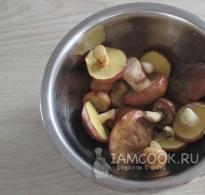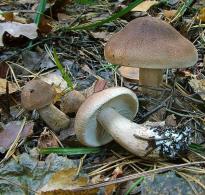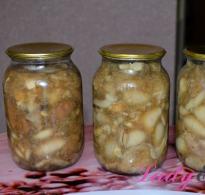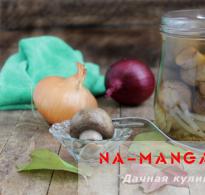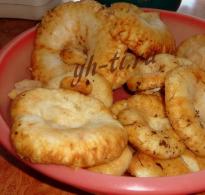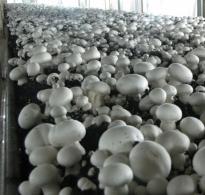What does champignon look like: description, photo
Gourmets who are fans of mushroom dishes often see champignons on their table, since these mushrooms are most often found on sale in our country. However, going for a walk in the forest and meeting champignons growing in their natural habitat, not everyone dares to collect them and eat them. This is due to the fact that this healthy, tasty and nutritious mushroom has common external features with the pale grebe and a number of its inedible tribesmen. Sometimes even experienced mushroom pickers find it difficult to say what champignon mushroom looks like in reality.
Description
The name of these mushrooms has French roots. In translation, it sounds like this - "mushroom". What does champignon look like? A more or less unambiguous answer cannot be given to this question, since this species of representatives of the fungal kingdom has a huge variety of varieties. However, there are some distinctive features that are more or less characteristic of all owners of this French name.
If you ask yourself seriously and study a large number of photos that exist on the topic “What do champignons look like”, you will notice that the leg of these mushrooms is usually white, 3-10 centimeters long, although there are also higher specimens. Usually the leg has a cylindrical shape, in some cases, with an extension to the bottom. This part of the fungus is either whole or hollow inside. If the leg is broken, then white flesh will be visible at the fracture site, which sometimes, when pressed on it, acquires a different color, depending on the particular type of champignon (most often the color is yellow, reddish or brownish).
It must be remembered that all mushrooms of this species have a “skirt” on the stem, or an annular trace from it. Sometimes there are champignons with two rings. According to this identification mark, one can distinguish edible champignon from its inedible relatives, or from “twins”, which can be pale grebes and some varieties of fly agaric.

This should be remembered
It is important not only how the champignon looks, but also the question of how it smells. By smell, you can also distinguish a poisonous mushroom from an edible one. The smell of real champignons is always “mushroom”, or mushrooms can have an anise flavor. The mushroom cap can be painted in both dark and light shades: from milky white to dark brown. Do not be embarrassed if there are small dark scales on the hat.
Hat as a badge
At a young age, the cap of this mushroom species is usually closed, and is an ovoid or round body. As it grows, the cap opens, exposing the plates on its back side. These plates should be quite often located to each other, their color indicates the age of the fungus: the older the champignon, the darker the plates. Throughout the life of this organism, their color changes from white or pale pink to brown and even black. This feature is also an important point in answering the question of what champignon looks like. It should be firmly remembered that in false champignons and in pale grebes, the plates do not change color with the age of the fungus.
Mushrooms never release moisture when pressed on them. This type of mushroom is one of the most resilient. Such strong men are able to break even through a thick layer of asphalt pavement and concrete. The leg of the mushroom, or rather its pulp, is able to change in color from simple contact with air.
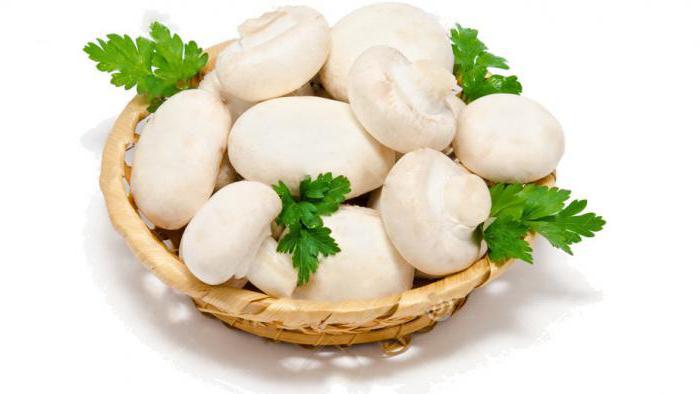
When buying artificially grown mushrooms of this type, we should also pay attention to how the champignon looks. The cap of the purchased mushroom should not be open, and the plates should only have a light shade, otherwise the mushrooms you purchase are old. Overripe mushrooms lose most of their taste, in addition, the benefits of such mushrooms are practically reduced to nothing. It is best if the overlap between the cap and the stem remains intact. Shop mushrooms should have an even shade, without spots and inclusions. Their skin should not have cracks and ruts.
Where do mushrooms grow?
In addition to the question of how champignon looks like, its habitats are also an interesting topic for discussion. These mushrooms can be found in almost all corners of the globe, except for the Far North and desert areas. Mushrooms belong to those species of living beings that live on dead tissues of organisms and on animal secretions. Therefore, one should look for such mushrooms on abundantly manured or humus-rich soil.
Most often, they do not grow singly, but in families, the number of which can be quite significant. In the case of growing in colonies, they form oval rows, which are popularly called circles of witches.
On a territorial basis, champignons are usually divided into those living in the forest zone, growing in the steppe area, and also growing in forest glades. There are also those that grow in places where vegetation is completely absent.
Champignon ordinary
There are many other names for this type of mushroom. It grows both in the natural environment and cultivated in artificially created conditions. It is found in park areas, meadows, fields. It happens that this mushroom becomes an inhabitant of summer cottages. Often grows in families.
Circles of ordinary mushrooms can grow to very large sizes. This variety of champignon can be called the most "sociable" among its relatives, since it usually lives in close proximity to human habitats.
How ordinary champignon looks in the photo, see below.
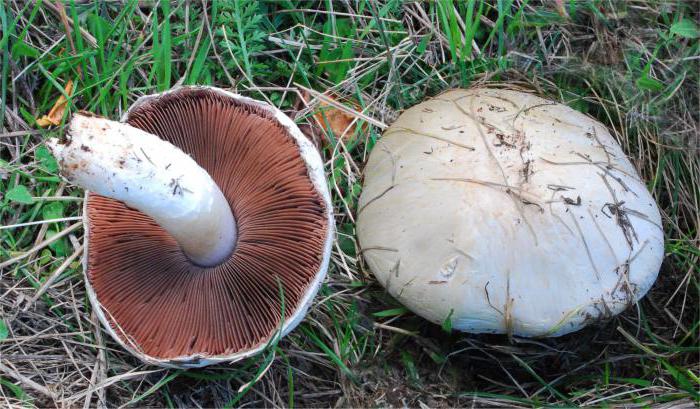
The cap of this mushroom can have a color from white to brown. The edges of the cap are turned inside. The white plates darken to brown or even purple with age. Over time, the hat opens. Its surface is smooth and silky to the touch or covered with small scales. There is a small bulge in the center. The diameter of the straight leg of the mushroom is about two centimeters. Usually its color does not differ from the color of the hat. The pulp is milky white, sometimes it turns pink at the edges of the fracture. This type of champignon grows from May to October.
Curve champignon
This champignon lives exclusively in coniferous forests near pines. It can also form an alliance with firs. The hats of these indigenous inhabitants of the forest are transformed several times during their lives. At first they have an oval contour, a little later the caps open, acquiring a conical shape. The flat shape of the cap indicates that you have an advanced mushroom in front of you. The smell of the fungus is almond or aniseed.
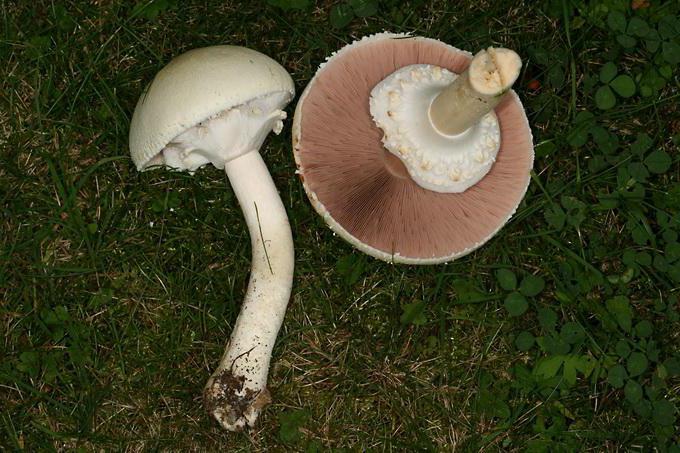
The color of the pulp is the same as that of most champignons - white. The long leg, distinguished by its slender appearance, is empty inside. This part of the fungus has a slight compaction closer to the ground surface and is almost always curved. The plates on the back of the cap are white in young specimens, and as they age, they become dark brown with red patches.
Forest inhabitant
Forest champignon is another representative of the forest population. It grows in the forests of Russia, as well as in other countries with a similar climate.
What do wild mushrooms look like? The cap of the mushroom is almost identical to the cap of the champignon described in the previous section, only the mushroom plates are uniform without specks. The leg is rather thick, low (up to seven centimeters high), cylindrical in shape, at a break, the flesh turns slightly red upon contact with oxygen.
If you still doubt what forest champignons look like, the photo below will help you figure it out.
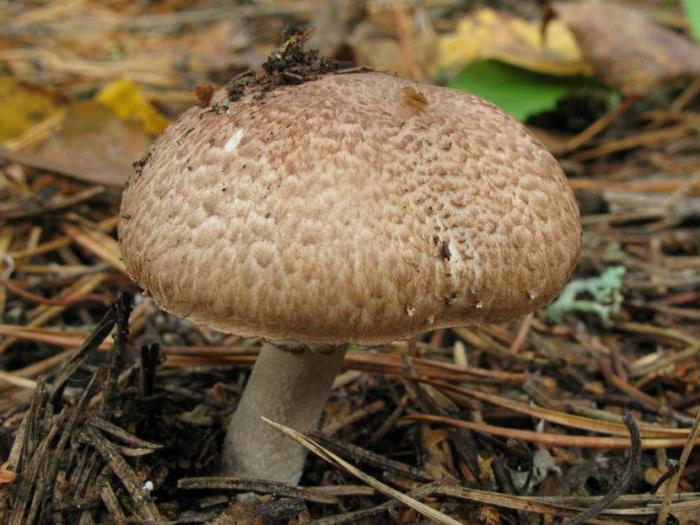
What do false mushrooms look like?
Much more often than the so-called false champignons, other "twins" are found in Russian forests - pale grebes, which are much more dangerous than inedible species of champignons.
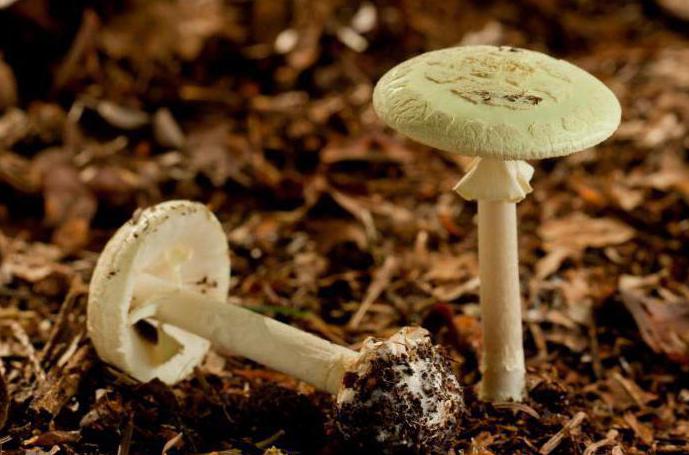
The main and most obvious difference between champignon is the color of the plates of a mature mushroom - from pink to black. "Newborn" mushrooms of both species are so similar to each other that only a specialist can distinguish them. Therefore, it is not recommended to collect too small champignons, especially if they do not grow in groups, but separately.
But what does false champignon look like? Usually this name is attributed to the red champignon. The cap of such a mushroom has the shape of a bell. Its ends are usually bent inwards. The color of the hat is white or gray, when pressed it changes to yellow. In older mushrooms, tears may occur at the edges of the cap. At the junction with the leg, the cap has a yellowish tint, flowing into orange. The smell of such mushrooms is sharp and extremely unpleasant; when boiled, it intensifies.
Due to the presence in nature of several types of mushrooms similar to champignons, experts strongly recommend that, before eating the mushrooms found, study in detail reliable materials on what a champignon mushroom looks like. The photos will help you figure it out.

